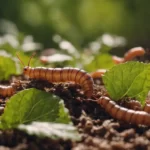Spanish moss, with its distinctive draping and silvery-gray appearance, is a quintessential element of the Southern United States’ landscape, particularly in historic and coastal regions. Despite its beauty and cultural significance, there’s a common concern about its impact on the health of trees it adorns. Does Spanish moss harm or even kill the trees it grows on? This article aims to demystify the relationship between Spanish moss and its host trees.
Spanish Moss
Spanish moss (Tillandsia usneoides) is not a true moss but an epiphytic plant, part of the Bromeliaceae family. It hangs from tree branches, growing in long, thread-like masses. Spanish moss doesn’t have roots but absorbs nutrients and moisture directly from the air through its leaves. It favors high humidity and is commonly found on oak and cypress trees, though it can grow on various other tree species as well.
Relationship Between Spanish Moss and Trees
Spanish moss establishes a largely commensal relationship with its host trees. It’s an epiphyte, meaning it grows on other plants but doesn’t extract nutrients from them, unlike parasitic plants. Instead, Spanish moss uses trees simply for physical support, gaining an advantageous position to access sunlight and moisture. This relationship suggests that Spanish moss is not inherently harmful to its host trees.
Does Spanish Moss Harm Trees?
The belief that Spanish moss is detrimental to tree health is largely unfounded. In normal conditions, Spanish moss does not harm healthy trees. It does not penetrate the bark or take nutrients from the tree itself. However, there are certain situations where Spanish moss could contribute to tree stress. A heavy infestation of Spanish moss may shade a significant portion of a tree’s foliage, which can impede photosynthesis. Additionally, in cases where a tree is already weakened or sick, the added weight of extensive Spanish moss growth can further stress the tree, potentially exacerbating existing problems.
Managing the Impact on Trees
Understanding that Spanish moss is not inherently harmful doesn’t negate the need for occasional management, especially in landscaped or residential areas. It’s important to monitor trees for overgrowth of Spanish moss, particularly if the tree is showing signs of stress or ill health. Removing some of the Spanish moss to reduce weight and allow more light to reach the tree’s leaves can be beneficial. This should be done carefully to avoid damaging the tree. In natural settings, Spanish moss usually finds a balance with its host trees and rarely requires human intervention.
Benefits of Spanish Moss to Ecosystems
Beyond its aesthetic appeal, Spanish moss provides significant ecological benefits. It offers habitat and nesting material for various wildlife, including birds, bats, and insects. The plant also contributes to the biodiversity of the ecosystems it inhabits, forming part of a complex habitat web. Spanish moss can also improve air quality, as it absorbs water and nutrients from the air, capturing dust and particulate matter.
Managing Spanish Moss in Landscapes
In residential or landscaped areas, managing Spanish moss is sometimes necessary to maintain tree health and aesthetic appeal. To control its growth, physical removal is often the most effective method. This can be done by gently pulling the moss from tree branches, being careful not to damage the tree bark. It’s important to wear gloves and protective clothing, as Spanish moss can house chiggers and other insects. If the moss is too high to reach, it may be advisable to seek professional help, especially for large or delicate trees.
When removing Spanish moss, it’s crucial not to strip all of it away, as this can disrupt the local ecosystem. Instead, aim for a balance where the tree remains healthy, and the moss can continue to provide ecological benefits.
Conclusion
Spanish moss, a staple of the Southern landscape, does not inherently harm trees. As an epiphyte, it uses trees for support but doesn’t extract nutrients from them. Problems may arise only when the moss grows excessively on already weakened trees. In such cases, careful management can help maintain both the tree’s health and the benefits Spanish moss offers to the ecosystem. Understanding this balance is key to appreciating and preserving the unique beauty and ecological importance of Spanish moss in natural and landscaped settings. By respecting the symbiotic relationship between Spanish moss and its host trees, we can continue to enjoy the enchanting appeal they bring to our environments.



